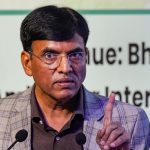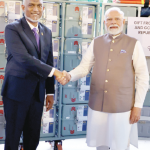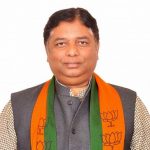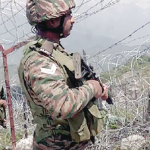FRAGRANCE OF IDEAS
The decade of 1980s was a very tumultuous period of the recent socio-political history of India. This was the period which in a subtle manner consolidated the ideologically based political divide in the country. With the breakup of the Janta party in 1979, its government also fell eventually. The Congress slowly and steadily worked overnight to regain its ground which it had miserably lost in the 1977 elections, held in the aftermath of the Emergency. The midterm elections held in early 1980 were won by the Congress overwhelmingly and both the factions of the Janta Party got reduced to pitiable numbers as compared to the earlier position.
Immediately after the elections in 1980, the whole membership of the erstwhile Bhartiya Jan Sangh (BJS) in the Janta Party decided to form a separate political party based on its own ideological moorings which put an end to the dual membership issue within the Janta Party. Thus Bhartiya Janta Party (BJP) came into being in April 1980 with a clear vision as enshrined in the erstwhile BJS manifesto. Right from the very beginning, the BJP developed a vision to evolve itself as a strong alternative to the Congress with emphasis on the ideological issues particularly the cultural nationalism. It gained currency among the people; and a new thinking started gathering mass at a broad-based socio-political platform throughout the length and breadth of the country.
While all this was going on at the political front, there was another thinking simultaneously taking shape in a socio-cultural sphere. This was spearheaded by the top leadership of the RSS and VHP at Nagpur and Delhi. They were seriously going for an action-plan to raise the issues of the three most sacred places of worship for the Hindus, i.e. Ayodhya, Kashi and Mathura. The main purpose was to persuade the Muslim community of India to leave their claim on the three most sacred places of Hindus where medieval foreign Muslim invaders/rulers had razed the Hindu temples to the ground and instead instituted mosques in their place. It was decided in the marathon meetings held one after the other to firstly focus on the Ayodhya issue since in Ayodhya, the disputed Ramjanambhumi structure was a functional temple and what was called the ‘Babri-Masjid’ was actually a non-functional mosque. The Faizabad administration had put a lock on the sanctum-sanctorum of the functional temple where Ramlalla-Virajman was worshipped daily by the designated pujari. RSS handed over the responsibility of the sensitive project to its senior functionary and able organiser, Moropant Pingle.
The VHP decided to organise the “Ekatmata Yatra” in 1983 consequent upon conversion of a large number of Hindus in Meenakshipuram in Tamil Nadu in 1981. The VHP-RSS had organised a huge ‘Virat Hindu Samaj’ (VHS) rally at the Boat Club in New Delhi to raise the issue of conversions in 1981 itself but that experiment of VHS didn’t last long for various reasons. “Ekatmata Yatra” was an All-India Yatra focussed on creating a spirit of unity among the Hindu society; and RSS was the principal guide of the whole project. Immediately on the completion of the Ekatmata Yatra, the organisers brought out another novel idea of “Ram-Janaki Rath Yatra” from Sitamarhi to Ayodhya. Sitamarhi is a town in the Maithili region of East Bihar and is considered as the birthplace of Mata Sita. In 1984, the VHP organised a “Dharma-Sansad” in Delhi and took very important decisive steps; and in the same year, the Rath-Yatra was initiated and hundreds of thousands of people joined the Yatra and made it a resounding success. In all, seven chariots passed through Bihar and Uttar Pradesh depicting Shri Ram behind the bars in Ayodhya. It invariably brought the two issues under the central focus, ie unity among the Hindus and the liberation of Ram Janambhumi in Ayodhya.
These yatras were conducted by the RSS-VHP very diligently and with purpose irrespective of the fact that the political atmosphere in the country was seriously impacted by the death of Indira Gandhi, the then Prime Minister of the country. The Congress went for an early Lok Sabha poll in 1984 and swept the elections benefiting from the sympathy wave consequent upon the murder of Indira Gandhi and thus created a record. The opposition in the country, including the BJP, was decimated numerically but this, however, paved a way for a tactical arrangement by the opposition to appear united against the central government within and outside the Parliament. By now, slowly and steadily, the Ramjanambhumi liberation movement had taken birth and got consolidated under the leadership of Ashok Singhal, senior pracharak of RSS and the Working President of VHP.
The pressure started mounting on the government for allowing “darshan” of Ramlalla in the Ramjanambhumi-Babri Masjid disputed structure in Ayodhya. Since this disputed site had ceased to be a functional mosque for more than a century and was a functional temple, the government was asked to allow the ‘darshan’ of the diety therein. In 1986, the district administration of Faizabad, presumably under instructions from the political leadership in Lukhnow and New Delhi, ordered opening of locks (which were put on in 1949) of the Ramjanambhumi structure. It was the first victory of the movement launched to liberate the Ramjanambhumi (the birthplace of Shri Ram).
This was also the stage when BJP associated itself with the Ramjanambhumi movement openly and asked its cadres to work towards its success. L.K.Advani, the tallest leader of BJP, initially contributed to the movement by adding important intellectual dimensions to it. His contributions made the movement a talking point among the political class of the country. Consequent upon this, many intellectuals joined the debate publicly for and against the movement. At this point of time, the project of “Shila-pujan” was taken into hand by the VHP with the active support of the RSS. After their consecration at the local levels, these Shilas (bricks) were taken to the Ramjanambhumi site in Ayodhya for their use during the construction of the future Ram temple. This took the movement virtually to almost every village, town and city of the country. Lakhs of people associated themselves with the movement and the stage was now set for the final push to the movement that had already taken an all-India shape.
The Bharatiya Janata Party adopted a resolution on Shri Ram Janmabhoomi for the first time in the meeting of its National Executive in Palampur (H.P.) on June 9-11, 1989 under the leadership of Advani. In this resolution, the BJP endorsed the demand for handing over Shri Ram Janmabhoomi to the Hindus for the construction of a Ram Temple there. The resolution also stated that the dispute at Ayodhya should be resolved through mutual dialogue between the two communities or, if this was not possible, through an enabling legislation. It also included the issue in its manifesto for the ensuing election. At this point of time, the VHP chalked out a brilliant plan to have “Shila-Nyas” at the Ramjanambhumi site. It created a very unpalatable situation for the government which had to face elections the same year. Initially, the Government of India and the Government of Uttar Pradesh agreed that the “Shila-Nyas” would be conducted outside the disputed site. However, on 9 November 1989, a group of VHP leaders and Sadhus laid the foundation stone for the temple by digging a 200-litre (7-cubic-foot) pit adjacent to the disputed land under full media and public glaze, with the permission of the authorities.
(To be continued….)
(The author is a senior BJP and KP leader, human rights defender, author and columnist and can be reached at: [email protected])










